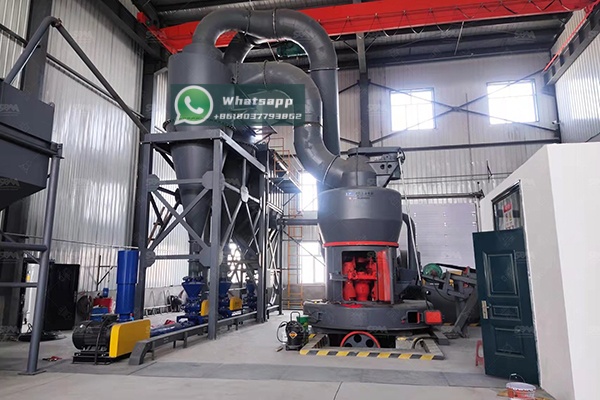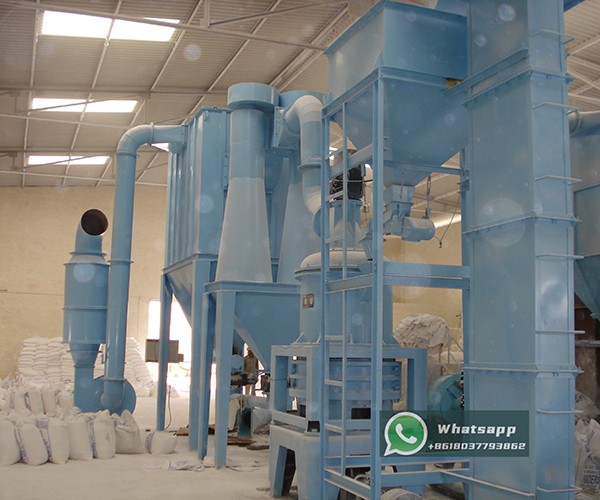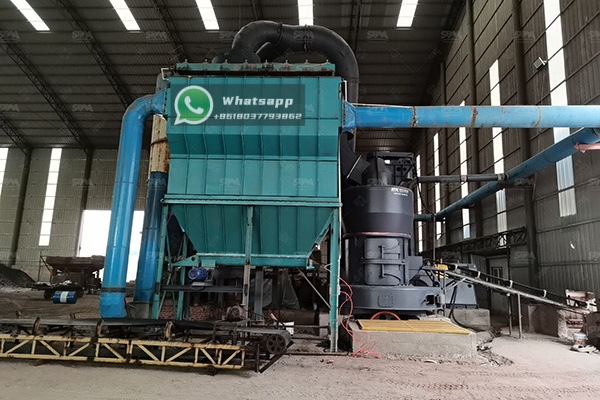Wollastonite, a naturally occurring calcium silicate mineral (CaSiO3), has become an indispensable material in the ceramic and frit industries. Its unique acicular (needle-like) crystal structure, high brightness, low volatile content, and fluxing properties make it an excellent component in ceramic glazes, bodies, and frits. However, to fully unlock its potential in these applications, precise and efficient grinding is paramount. The transformation of raw wollastonite ore into a functional, high-purity powder demands sophisticated grinding technology that can achieve specific particle size distributions while preserving the mineral’s beneficial morphological characteristics.
In ceramic glazes, wollastonite serves multiple functions. It acts as a source of both CaO and SiO2, reducing or eliminating the need for other materials like limestone and silica. This simplifies the batching process and can lead to a more consistent melt. The acicular structure of wollastonite can impart improved mechanical strength and reduced warpage in ceramic bodies. In frit production—where raw materials are melted, quenched, and ground into a glassy powder—wollastonite’s consistent chemistry and low loss on ignition contribute to stable melting behavior and fewer surface defects in the final fired product, such as pinholes or blisters.

The primary challenge in preparing wollastonite for high-end ceramic applications lies in the grinding process. The objective is twofold:
Furthermore, the grinding system must be energy-efficient, have a small physical footprint, and be designed to prevent contamination, ensuring the high whiteness of the wollastonite is maintained.
Traditional grinding mills like Raymond Mills and Ball Mills have been used for wollastonite processing. However, for the most demanding applications in the ceramic and frit industry, advanced grinding technologies offer superior performance, efficiency, and control.
Shanghai Zenith Machinery Co., Ltd., a leading manufacturer of ore grinding equipment, has made significant achievements in the field of ultra-fine powder grinding. Their specialized research and development have produced a range of mills ideally suited for processing industrial minerals like wollastonite. For producers aiming for high-quality wollastonite powder for glazes and frits, two of Zenith’s products stand out: the LUM Ultrafine Vertical Mill and the XZM Ultrafine Grinding Mill.
The LUM Ultrafine Vertical Mill represents the cutting edge in grinding technology. It integrates grinding, drying, powder classification, and conveying into a single, compact unit. This integrated approach is highly beneficial for wollastonite, which may require drying if processed with moisture. Its key advantage lies in its ability to produce products with a high content of end-fines and a very tight particle size distribution, which is exactly what is needed for premium ceramic glazes.
The intelligent control system allows for precise adjustment of operational parameters, ensuring consistent product quality and easier maintenance. For wollastonite grinding targeting a fineness between 5-30 microns (D97), the LUM series is an excellent choice.
| Model | Main Machine Power (kW) | Capacity (t/h) | Size Distribution D97 (μm) |
|---|---|---|---|
| LUM1525 | 220-250 | 1.6-11.5 | 5-30 |
| LUM1632 | 280-315 | 2.0-13.5 | 5-30 |
| LUM1836 | 355-400 | 2.3-15 | 5-30 |

Another exceptional solution from Zenith is the XZM Ultrafine Grinding Mill. This mill is widely recognized for its ability to produce superfine powders from soft to medium-hard materials. It is perfectly suited for grinding wollastonite to a fineness range of 325 to 2500 mesh. Its design ensures low energy consumption and high efficiency, making it a cost-effective option for high-volume production.
The XZM Mill is renowned for its reliability and produces a fine, consistent powder ideal for creating smooth, high-gloss ceramic finishes. Its robust construction and easy maintenance make it a popular choice in industrial mineral processing plants.
| Model | Working Diameter (mm) | Max Feed Size (mm) | Final Size (mesh) | Output (kg/h) |
|---|---|---|---|---|
| XZM221 | Φ800 | ≤20 | 325-2500 | 500-4500 |
| XZM268 | Φ1680 | ≤20 | 325-2500 | 5000-25000 |
The quality of the final ceramic product is intrinsically linked to the quality of its raw materials. For wollastonite, this quality is defined by its chemical purity and, just as importantly, its physical properties achieved through grinding. Investing in advanced grinding technology from a reputable manufacturer like Shanghai Zenith Machinery is not merely an operational expense but a strategic decision to enhance product value and competitiveness.
By utilizing mills like the LUM Ultrafine Vertical Mill or the XZM Ultrafine Grinding Mill, producers can consistently deliver wollastonite powders that meet the exacting standards of the modern ceramic glaze and frit industry. This ensures better suspension in glaze slurries, more predictable firing behavior, and ultimately, a superior finished product with excellent aesthetic and functional properties.
